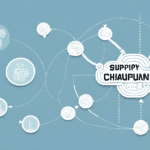Benefits of Reverse Logistics Management
Cost Savings
Effective reverse logistics management can help your business reduce costs in various ways. By refurbishing and reselling returned products, you can recover costs incurred from the initial sale, potentially increasing your profit margins by up to 20%[1]. Additionally, optimizing the return process minimizes inventory costs by efficiently managing surplus and overstocked items.
Environmental Impact
Reverse logistics plays a crucial role in reducing your business's carbon footprint. Implementing sustainable practices such as recycling and repurposing can significantly decrease waste. According to the Environmental Protection Agency (EPA), effective waste management through reverse logistics can reduce landfill waste by up to 30%[2]. This not only benefits the environment but also enhances your brand image, attracting environmentally conscious customers.
Managing Returns Efficiently
Importance of Returns Management
Returns management is integral to reverse logistics. Inefficient handling of returns can disrupt inventory management, leading to mismatches in demand and supply. Implementing automated systems can streamline the process, reducing time and resources spent on manual management.
Enhancing Customer Satisfaction
Providing a hassle-free return experience increases customer satisfaction and loyalty. Studies show that 90% of consumers expect a seamless return process[3]. Efficient return management ensures customers have a positive experience, encouraging repeat business and positive word-of-mouth.
Avoiding Common Pitfalls
Common mistakes in reverse logistics include poor communication and lack of collaboration between departments. Establishing clear communication channels between product development, customer service, and supply chain management is essential. Implementing robust data management systems can help identify and address weaknesses in the returns process.
Role of Technology and Trends in Reverse Logistics
Technological Advancements
Advancements in technology have revolutionized reverse logistics. Automation tools and software solutions can manage the entire process from product return to refurbishment efficiently. Real-time tracking systems provide visibility into inventory levels and return statuses, enhancing decision-making and accountability.
Future Trends
The future of reverse logistics is shifting towards circular economies and sustainability. Emerging trends include the increased use of artificial intelligence for predictive analytics and the development of new revenue streams through the resale of refurbished products. Staying abreast of these trends is crucial for maintaining a competitive edge.
Implementing and Measuring Reverse Logistics Programs
Implementation Steps
Implementing a successful reverse logistics program involves several key steps:
- Developing a comprehensive returns policy
- Establishing a streamlined returns process
- Integrating technology solutions for automation
- Fostering collaboration and communication across departments
- Measuring and analyzing program performance
Measuring ROI
To measure the ROI of your reverse logistics program, calculate the difference between the revenue generated from refurbished products and the costs saved through efficient returns management. Key metrics include inventory costs, processing times, and customer satisfaction levels. According to a study by Gartner, businesses can achieve an ROI of up to 150% with effective reverse logistics strategies[4].
Strategic Aspects of Reverse Logistics
Evolution of Reverse Logistics
Reverse logistics has evolved from being viewed as a cost center to a significant value creator within businesses. Modern reverse logistics integrates seamlessly with overall supply chain strategies, enabling cost savings, improved customer service, and new revenue streams.
Supply Chain Optimization
Effective reverse logistics is critical for supply chain optimization. It provides transparency into return processes, helping businesses forecast demand and supply accurately. This leads to better inventory management and identification of cost-saving opportunities.
Competitive Advantage
Leveraging reverse logistics can provide a competitive advantage by reducing costs and enhancing customer service. Offering a seamless return experience differentiates your business from competitors, fostering customer loyalty and increasing market share.
Challenges in Reverse Logistics
International Reverse Logistics
Managing reverse logistics on an international scale presents challenges such as varying regulations, customs, and taxes. Partnering with local service providers who understand the regional landscape is essential for effective management. Additionally, implementing real-time tracking tools can enhance visibility and control over international returns.
Key Players in Reverse Logistics Management
The reverse logistics ecosystem includes various key players responsible for different aspects of the returns process:
- Third-Party Logistics Providers (3PLs): Manage the entire reverse logistics process, from product return to resale.
- Freight Forwarders: Handle the transportation of returned products.
- Recyclers: Dispose of non-refurbishable items responsibly.
Identifying and collaborating with the right partners is crucial for optimizing your reverse logistics operations.
Conclusion
Reverse logistics management offers significant benefits, including cost savings, environmental sustainability, and enhanced customer satisfaction. By implementing best practices, leveraging technology, and collaborating with key industry players, businesses can optimize their returns process, reduce costs, and improve overall profitability. Staying agile and adaptable in the face of evolving trends ensures long-term success in reverse logistics.
For more information on reverse logistics best practices, visit Supply Chain Digital and Logistics Management.
---
**References:**
1. [Inbound Logistics - The Effects of Reverse Logistics on Profitability](https://www.inboundlogistics.com/article/the-effects-of-reverse-logistics-on-profitability/)
2. [EPA - Sustainable Management of Materials](https://www.epa.gov/smm/sustainable-management-materials-reduce-reuse-recycle)
3. [Bain & Company - Loyalty Facts](https://www.bain.com/insights/loyalty-facts/)
4. [Gartner - Logistics Insights](https://www.gartner.com/en/logistics)






















